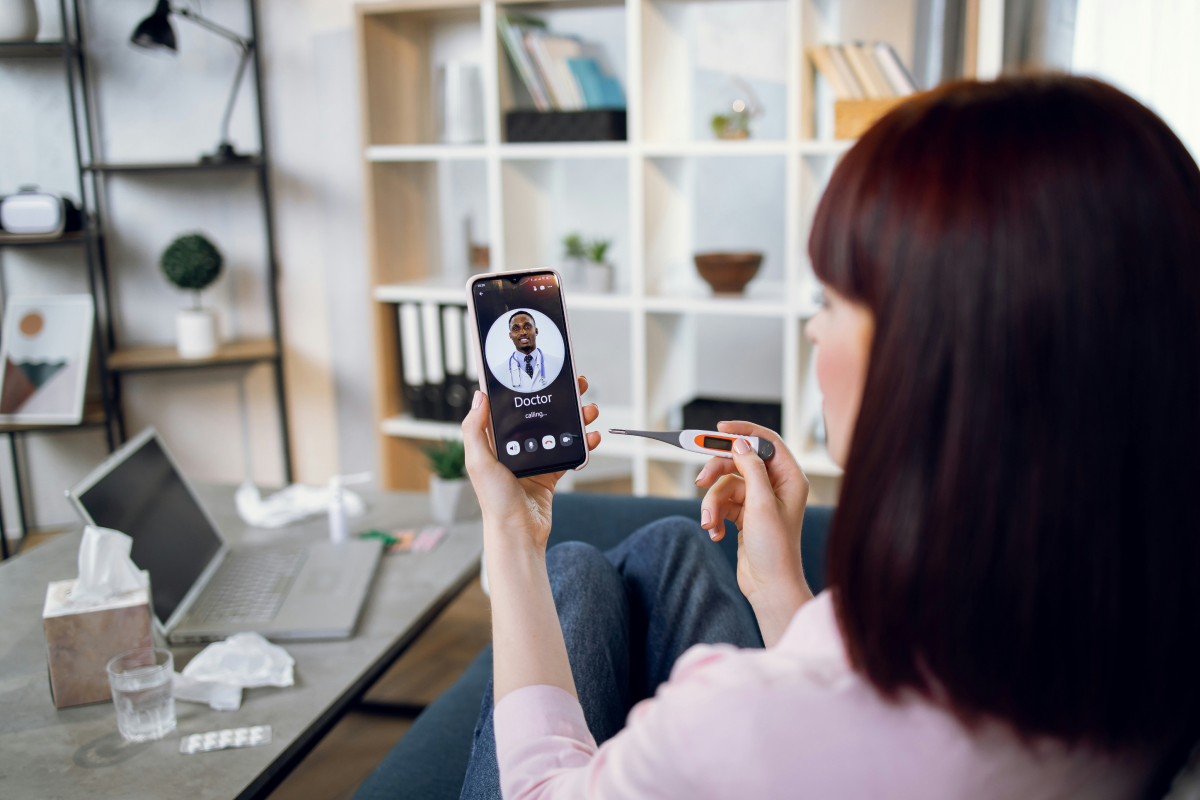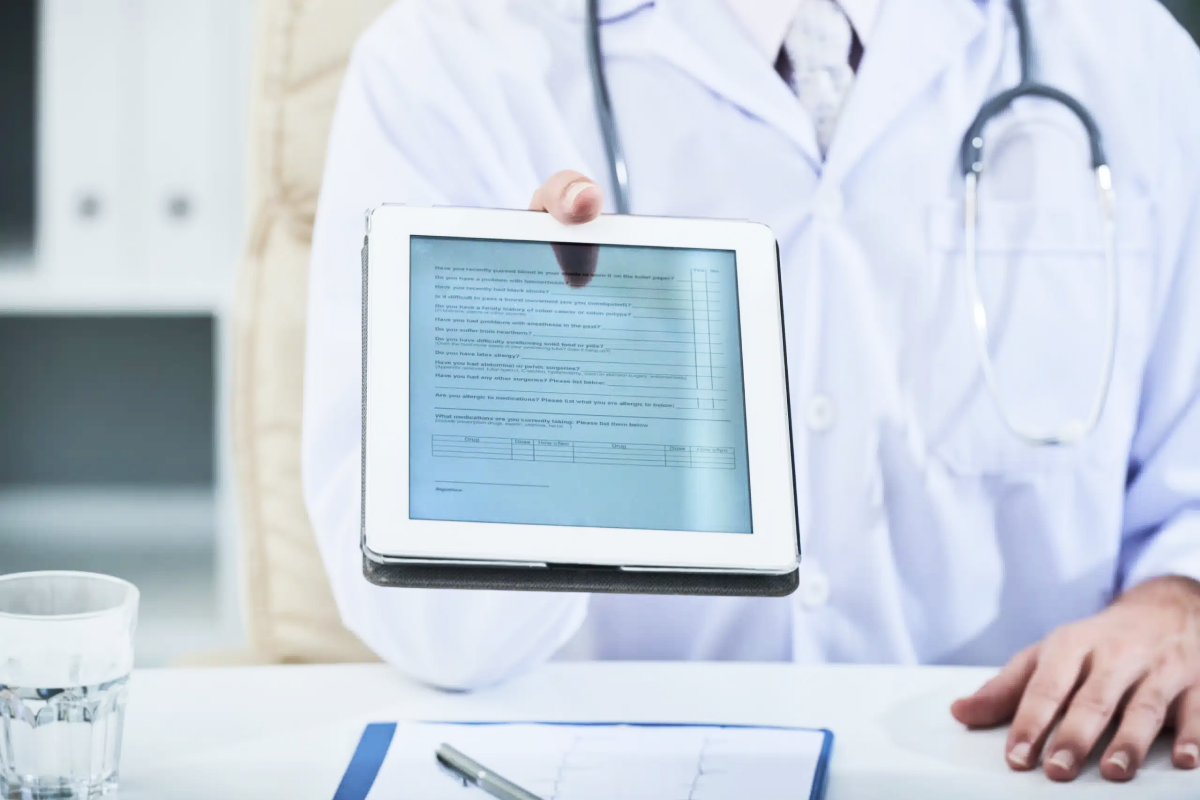Healthcare software development has been gaining momentum in the last few years. By 2027 the market of mobile healthcare apps (mHealth) is estimated to grow at 43.9%. Quite an inspiring statistic!
However, as the industry grows, the standards for managing sensitive patients’ data are also becoming stricter. There is a password for all health-related apps dealing with sensitive patient data: HIPAA compliance.
But may this abbreviation not frighten you! From my experience building HIPAA-compliant apps, I can state that this is almost no different from making an ordinary app but requires a little more precision and effort (and budget).
Below I will unveil 7 essential moments to follow when building a HIPAA-compliant app.
Let’s start!
What is HIPAA and Why We Should Care?
The abbreviation HIPAA is translated as "Health Insurance Portability and Accountability Act." This document lays out regulations for exchanging, transferring, or using protected health information (PHI) and securing this information from leakage or interference.
Some (not) boring history recap of HIPAA below:
HIPAA appeared in 1996 as a solution to the arising problem: how to protect patients' data from fraudulent misuse while allowing its use for medical services and only by authorized staff. The document set down a system of rules in ePHI protection, and was later, in 2013, extended to data protection in the digital realm.
That’s it, the history recap is done.
Legal Acts to Follow When Building HIPAA Compliant Products
By its nature HIPAA is not a single document, but a massive set of legal acts. Here is the list of legal documents that need to be followed while building a HIPAA compliant-app:
- The HIPAA Privacy Rule - provides measures to protect the privacy of PHI;
- The HIPAA Security Rule requires appropriate administrative, physical and technical safeguards;
- The HIPAA Enforcement Rule - lays down the penalties for HIPAA violations;
- The Breach Notification Rule - sets a breach notification following the breach of unsecured PHI;
- The Omnibus Rule - final act reinforcing the power if the previous acts.

Do You Always Have to Follow HIPAA?
The focal question for a healthcare cofounder to answer is: do I have to abide by the HIPAA rules, if I build any health-related apps?
A quick answer – no, you do not. Yet, a more honest answer is – you most probably do.
The thing is HIPAA compliance rules come into play only when your app is used to:
- Collect personal data;
- Accumulate personal data;
- Store personal data;
- Transmit personal data;
- Operate personal data.

Wait, but what is exactly meant by PHI? Putting it simply, this is the sensitive data that is used by the health service providers. This may include:
- patient and physician names
- telephone numbers
- geographic data
- social security numbers
- medical record numbers
- health plan beneficiary numbers
- and more…
Basically, the list of PHI elements includes at least 18 items.

7 Ways to Make Your App HIPAA Compliant
If I were a severe lawyer, who's into lengthy legal reads, I would "strongly recommend" checking the HIPAA Compliance Act.
Luckily, we are more about products than documents, so I suggest looking at the HIPAA regulation from the product's point of view.
Here are the top 7 instruments that you can use to ensure your product falls under all the HIPAA regulations:
Encrypted PHI
When it comes to HIPAA compliance, encryption is the word you are likely to hear.
Indeed, data encryption is the key to proper HIPAA compliance with your product. What do we mean by saying encryption?
This means that all the patient’s data (stored, transmitted, accumulated, etc.) has to be hidden from the eyes of everyone but the patient himself. Sure, the exception is made for authorized staff only.
Here are some of my recommendations on how to provide data encryption:
- Use cloud services with encrypted databases (for example, Amazon Relational Database Service (RDS) or Cloud SQL in the Google Cloud Platform);
- Transfer data via HTTPS and certificates;
- Use SSL certificates.
Active Logs-In Tracker
A HIPAA-compliant system should track all the login attempts (logs and event logs) and check if changes were made to the PHI.
It is paramount to fix all the logs in the system. Moreover, this info is also essential to be transparent to every system member, even if those logins were unsuccessful.
User Role Management
Manage the user roles on your product to ensure only authorized individuals have access to patients' records. Your software should provide user authorization and monitoring functionality via unique user identifiers.
Backup is NOT an option
Indeed, when developing HIPAA-compliant software, a backup, and recovery system is a must-have rather than an option. Safe and secure backup is the backbone of security to prevent data loss. And guess what – backup data should also be encrypted.
Uptech’s Protip 1: Sometimes, things can be a little more complicated. For example, the user can not have access to a secure Wi-Fi network to make an immediate backup. In cases like this, the apps should provide instruments of reserve data copy as soon as the device is in the secure network area.
Uptech’s Protip 2: Ideally, your backup data should be stored on an offsite mirrored Cloud facility to maintain uptime.
Automatic Log Out
Users often forget to log out of the app, which opens easy access to the PHI. Such a mistake can increase the risk of occasional interference to the personal data or its illegal usage by somebody else if the device is used simultaneously. Once the user’s session is over, the system carries out an automatic logout from the system in order to secure the data contained in the user account.
Disposable Data
In HIPAA compliant apps data has its term of usage. Once ePHI is no longer needed, the system should automatically erase the data and never retrieve it.
Instant Emergency Mode
Once a data leak or interference occurs, the system should automatically take protective measures.
Uptech’s Protip: HIPAA-compliant software should always be custom-designed. Unfortunately, typically built software cannot tick the box regarding security and privacy. It takes exceptional and profound work to build an app designed to transmit, receive and store ePHI.
.png)
Secure User Authentication
While focusing on personal data protection inside the app, you should not also forget the basics – the secure authentication process. Though the safety of IDs and passwords is a must for any app, a HIPAA-compliant app is no exception here. So here are 2 basic new tech instruments that can simplify the sign-in process while providing security:
- Two-Factor Authentication (2FA). The most direct way to secure your password information is by applying the 2FA;
- Biometrics Authentication – the thing that will make the life of users much more accessible. The uniqueness of the human print, and face of voice helps to provide a higher level of security while simplifying the process of sign-in.

Conclusion
The key principle in HIPAA-compliant app development is that users' personal data should be under utmost protection. Moreover, the consequences of HIPAA breaches can be very costly. But I stress it again – building a HIPAA-compliant app is no more difficult than building any other category of app. It just takes more precision to detail in security.
With six years of experience building complex products, we know how to create an attractive and intuitive healthcare product that users love while safeguarding users' privacy.
Contact our Sales Manager to learn more about Uptech’s experience in healthcare app development.
%2520(1).avif)

























































































.avif)









